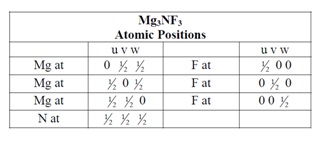Reference no: EM132544626
Revision Quiz
Question 1. Suppose that X, Y, Z are random variables such that Y = E[X | Z]. Show that
Var(Y ) ≤ Var(X).
Question 2. Let A be an n x n matrix and X an n-dimensional random vector with expectation µ and covariance matrix Σ. Show that
E[XTAX] = µTAµ + tr(AΣ).
Question 3. Suppose that

Show that
Xq + ΣrT Σp-1(xp - Xp)
has the same distribution as (Xq | Xp = xp) (the distribution of Xq, con- ditional on Xp = xp).
Hint: Write
Xq - ΣTr Σp-1Xp = -ΣTr Σp1, Iq] X
and calculate the covariance matrix of the right-hand side.
Time Series Quiz Questions
Question 4. Let Wt ∼iid N(0, 1) and define the process
Xt := WtSt-1, t = . . . , -1, 0, 1, . . .
where St := sign(Wt). In answering the following questions you must pro- vide adequate reasons and/or mathematical proofs of your assertions.
(a) Is Xt a weakly stationary white noise time series? (You must com- pute the means, variances and autocovariances as part of your answer.)
(b) Is {Xt} a strictly stationary process?
(c) Is {Xt} ∼iid N(0, 1)?
Question 5. Let Zt ∼iid N(0, 1) and define the process
Xt = ZtZt-1, t ∈ Z .
(a) Is {Xt} a weakly stationary time series? To establish this you will need to calculate the mean and covariance functions for {Xt}.
(b) Is Xt strictly stationary? A sequence of identically distributed random variables?
(c) Is {Xt} a Gaussian process? Give reasons.
(d) Let Wt = Xt2 be the squared process. Show that EWt = 1, Var(Wt) = 8, Cov(Wt, Wt+l) = 0 for |l| > 1 and Cov(Wt, Wt+l) = 2 for |l| = 1.
(e) Calculate the autocorrelations for the squared process {Xt2}.
Question 6. Let An be a tridiagonal covariance matrix. Write pseudocode for the LDL factorization of An in (n) time. Implement it in R/Matlab/Python and test that it works for n = 10. Next, write pseudocode for solving the linear system Anx = bn for some bn in (n) time. Then, implement this code on a computer and test it.
As a test matrix, you may use the following Matlab generated matrix
A=diag(1:10)+diag(9:-1:1,-1); A=A‘*A.
Question 7. Verify that if Ln is a lower triangular matrix with ones down the main diagonal, then its inverse Ln-1 is also a lower triangular matrix with ones down the main diagonal.
Question 8. Show that γ(t, s) = min{t, s} is a valid covariance function.
Question 9. Using the spectral results about the autocorrelation in lectures, explain whether 2 exp(-2|t| ) can be (or cannot be) a valid autocovariance function of a stationary process. Give reasons/proofs.
Question 10. Let X1, X2 be random variables with mean zero, unit variance, and covari- ance Cov(X1, X2) = 0. Consider the time series for β ∈ (-π, π):
Yn = X1 cos(nβ) + X2 sin(nβ), n ∈ Z .
Give a formula for the spectral density of Yn using the delta function
δ(x) = 0 x ≠ 0 .
δ(x) = ∞, x = 0
Question 11. Let U~U(π, π) and V ~ fV (v) be independent (fV is a pdf). Show that the time series
Xt := exp(iU - iV t), t ∈ Z
is stationary and find its spectral pdf.
Question 12. Let {Xt} be a weakly stationary time series with mean µ and continuous spectral pdf f. Define the average Xt = X1+.....+Xt . Show that

is the so-called Fejer kernel with the property that

for any continuous function g. Hence, conclude that tVar(X¯t) → 2πVar(X1)f˜(0) and X¯t -→ µ.
Question 13. Show that the inverse of F/√n, where

and ω = exp(-i 2π/n), is simply its complex conjugate F/√n.
Question 14. Complex-valued Multivariate Normal. Show that the joint density of (R, I) produced by the circulant embedding method can be written as:
fZ(z) = 1/(2π)2n|C|2 exp( -zTC-1z),
where Z := R + iI.
Question 15. Sunspot Data. Get the sunspot data from the course webpage and, using your own FFT implementation in Python/Matlab/R, compute and plot the power spectrum to obtain the picture in the lecture notes.
Question 16. Fractional Wiener Noise. A fractional Wiener noise Wt is a stationary Gaussian process with autocorrelation:
ρ(t) = |t + 1|2h - 2|t|2h + |t - 1|2h/2 , t ∈ Z,
where h (0, 1) is the Hurst parameter. Write code to generate a fractional Wiener noise with Hurst parameters h = 0.2 and h = 0.95, and with length n = 104. Implement both an FFT spectral approach and an LDL decomposition approach for the simulation. Comment on the jaggedness of the timeseries.
Question 17. Fractional Brownian Motion. A fractional Brownian motion Bt is a nonstationary Gaussian process with correlation:
ρ(s, t) = |s|2h - |t - s|2h + |t|2h/2 , t, s ∈ Z.
Show that the increment process defined as Wk:= Bt+k Bt is stationary and find a formula for its autocorrelation. How can you simulate this process given the previous problem?
Note: FIRST 10 Questions only